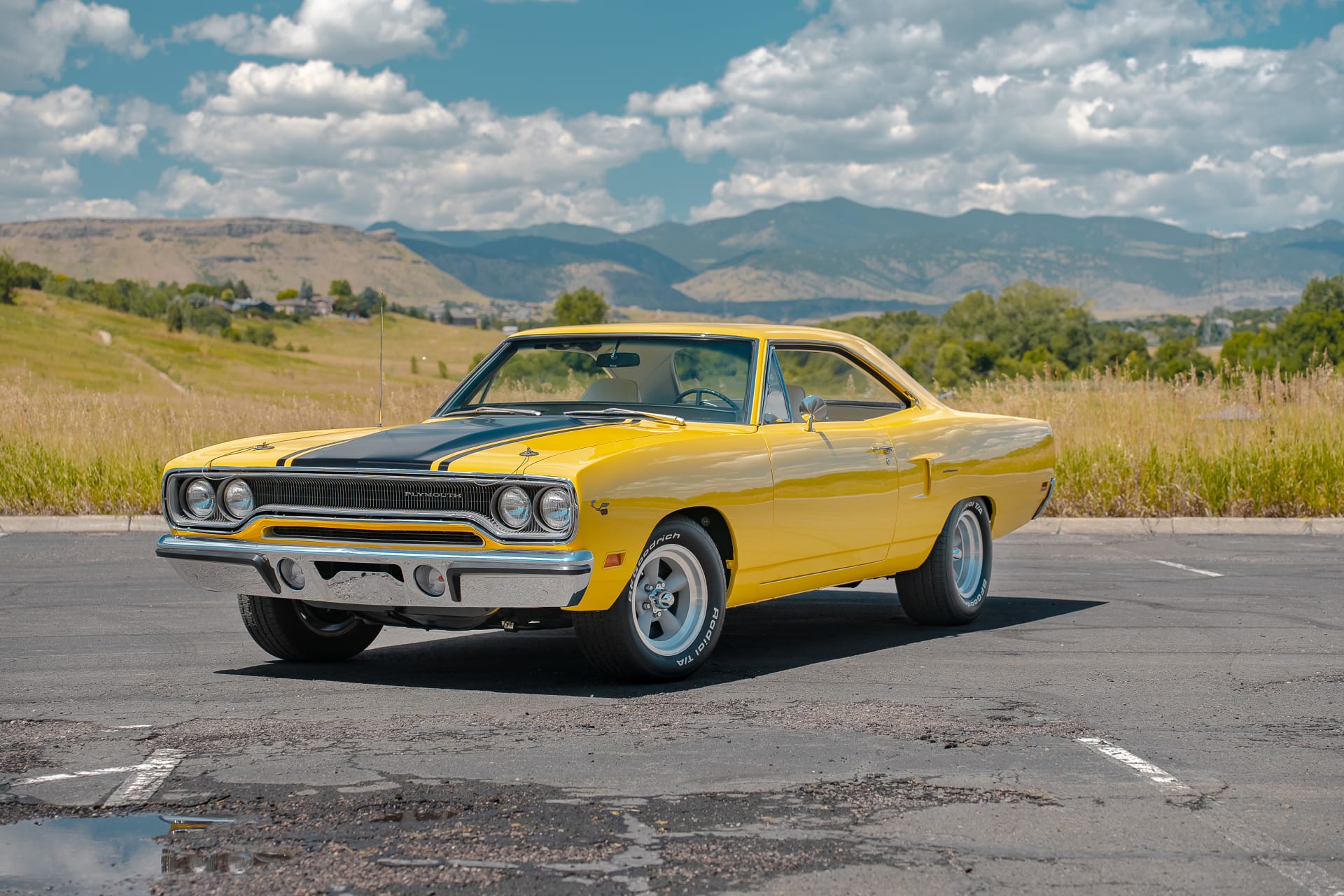The 1970 Plymouth Road Runner holds a legendary status among classic muscle car enthusiasts. This automotive icon is renowned for its potent performance, aggressive styling, and a distinct personality that captured the spirit of the golden age of American muscle.
A Legacy of Power and Performance
The heart of the 1970 Road Runner is its legendary 383 cubic inch V8 engine. This powerplant was a staple of the muscle car era, renowned for its raw power and torque. Paired with a four-speed manual transmission, the Road Runner offered an exhilarating driving experience that put drivers in complete control of the beast.
Styling that Defined an Era
The 1970 Plymouth Road Runner wasn’t just about brute force; it made a bold statement with its design. The distinctive “coke bottle” styling, characterized by a wide stance and a narrow waistline, gave the car an aggressive and aerodynamic presence. The optional high-impact colors and bold “Road Runner” decals further enhanced its visual appeal, making it instantly recognizable on the road.
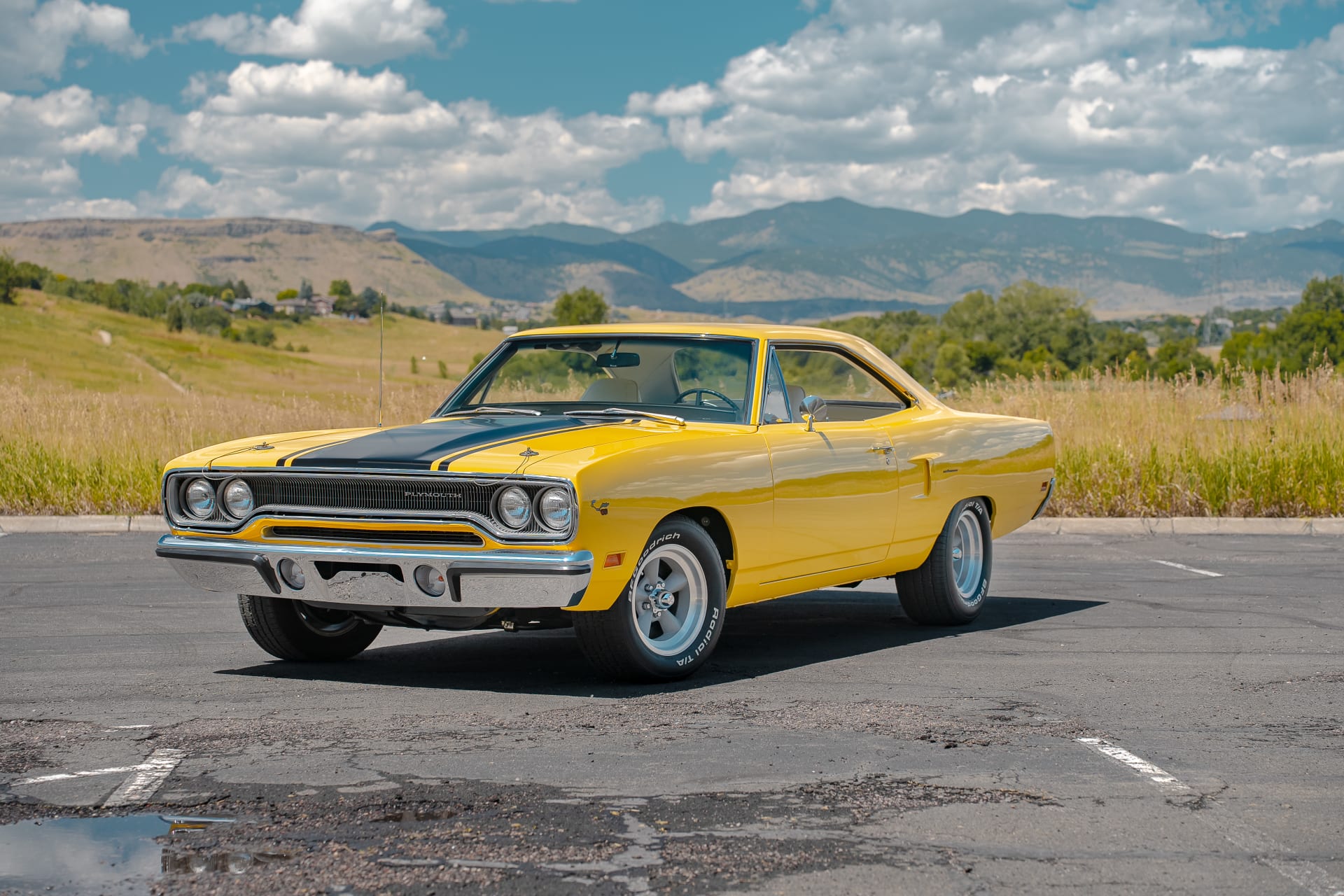 1970 Plymouth Road Runner
1970 Plymouth Road Runner
Inside the Cockpit: A Blend of Sport and Functionality
The interior of the 1970 Road Runner mirrored its performance-oriented nature. Bucket seats provided ample support during spirited driving, while a minimalist dashboard kept the focus on the essentials. The center console housed the shifter for the four-speed manual transmission, emphasizing the car’s driver-centric design.
The Birth of a Legend: Origins of the Road Runner
Plymouth introduced the Road Runner in 1968 as a no-frills, performance-focused muscle car aimed at budget-conscious enthusiasts. The name was licensed from Warner Bros. in a move that perfectly captured the car’s playful yet powerful personality. Plymouth paid Warner Bros. $50,000 for the rights to use the Road Runner name and likeness, and another $10,000 to develop the now-iconic “beep-beep” horn.
The 1970 Model Year: The Pinnacle of the Breed?
The 1970 model year marked a significant milestone for the Plymouth Road Runner. It received a major restyling, giving it a more aggressive and modern look. The new design featured a more pointed front end, a redesigned grille, and a distinctive “power bulge” hood that hinted at the power that lurked beneath.
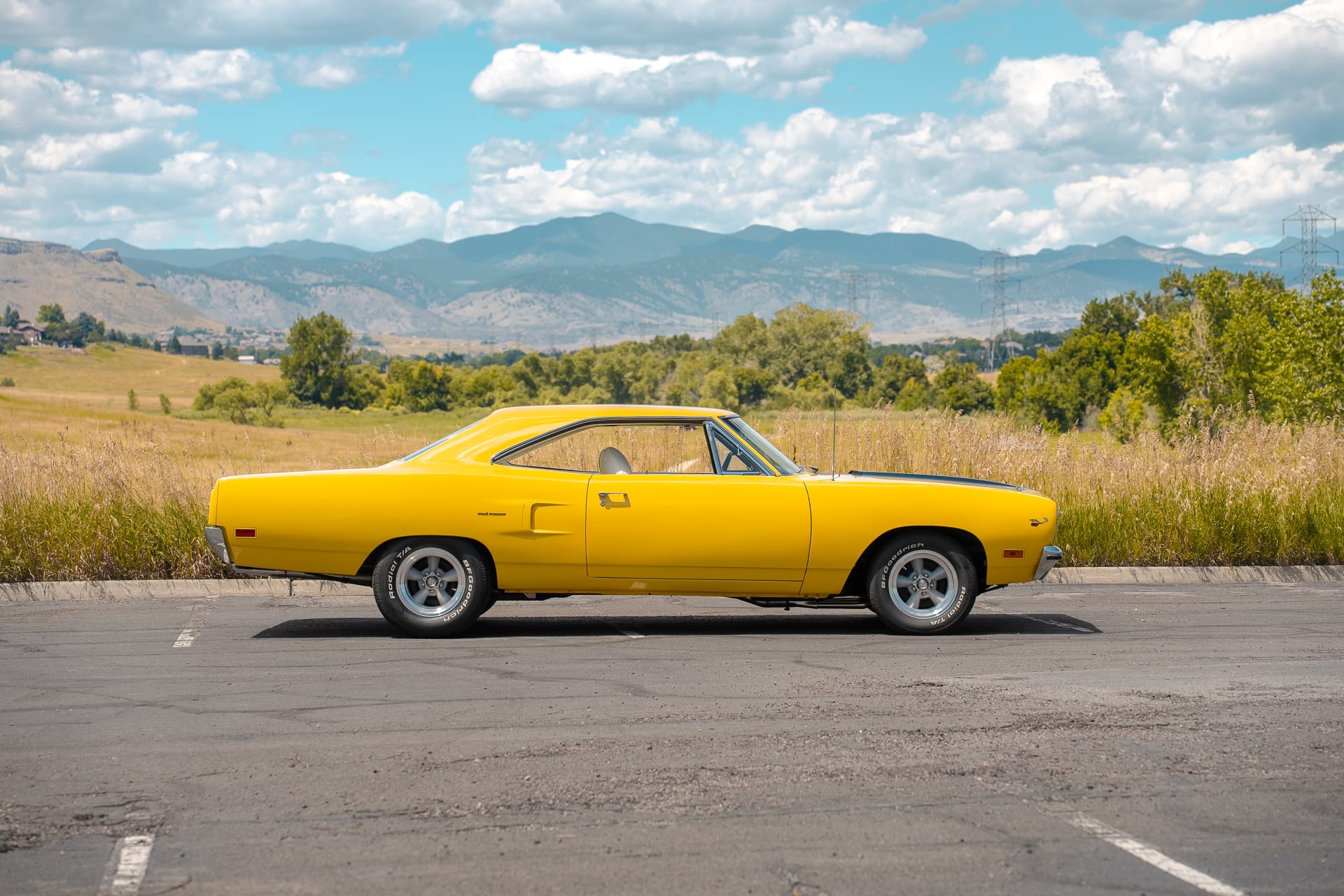 1970 Plymouth Road Runner
1970 Plymouth Road Runner
Engine Options and Performance
The 1970 Road Runner offered a range of powerful engine options, including the standard 383 cubic inch V8. For those seeking even more thrills, Plymouth offered the legendary 426 cubic inch Hemi V8. This engine was a game-changer in the muscle car world, propelling the Road Runner to supercar-rivaling performance figures.
A Collector’s Dream: The Enduring Legacy of the Road Runner
Today, the 1970 Plymouth Road Runner remains a highly sought-after classic car. Its combination of iconic styling, potent performance, and historical significance has cemented its place in automotive history. Whether it’s a meticulously restored example or a well-preserved survivor, the Road Runner continues to turn heads and evoke a sense of nostalgia for a bygone era of American muscle.
Owning a Piece of History: What to Look for When Buying a 1970 Road Runner
Finding a well-maintained 1970 Plymouth Road Runner is a dream for many classic car enthusiasts. However, given the car’s age and the passage of time, it’s essential to be diligent during the buying process.
Inspecting the Body and Frame:
Carefully examine the body for signs of rust, especially in common problem areas such as the wheel wells, undercarriage, and lower body panels. Look for evidence of previous repairs or accident damage, and ensure that the frame is straight and free from any structural issues.
Engine and Transmission:
The heart of any classic muscle car is its engine and transmission. Have a qualified mechanic thoroughly inspect the engine for any leaks, strange noises, or signs of wear and tear. Check the transmission for smooth shifting and ensure that the clutch operates properly if it’s a manual transmission model.
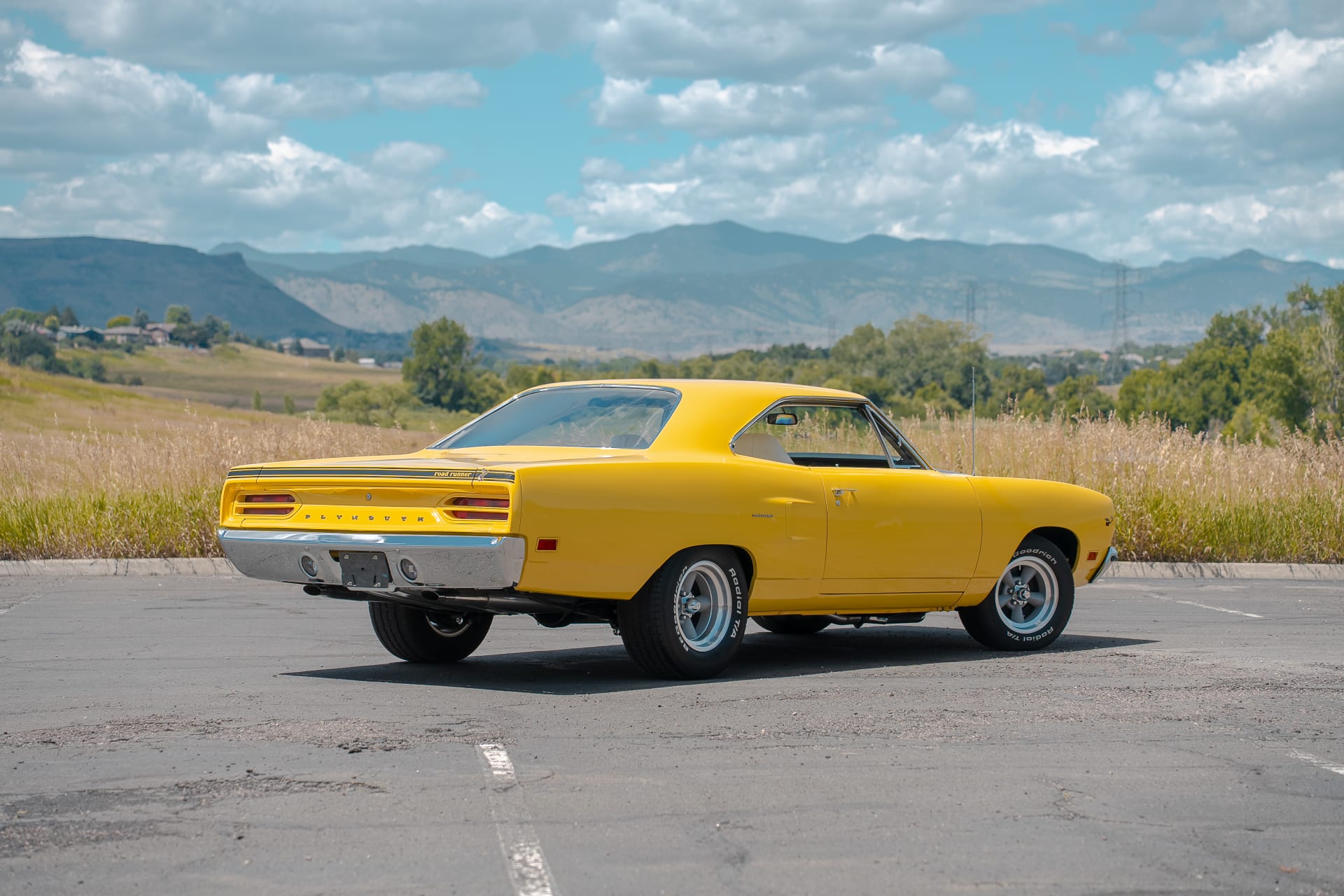 1970 Plymouth Road Runner
1970 Plymouth Road Runner
Interior Condition
Assess the condition of the interior, including the seats, carpets, dashboard, and headliner. Look for signs of wear and tear, and check the functionality of all gauges, lights, and electrical components. Original interiors in good condition can significantly increase a Road Runner’s value.
Documentation and History
Request the seller to provide any available documentation, including the car’s history report, maintenance records, and ownership history. This information can give valuable insights into the car’s past and help determine its authenticity and overall condition.
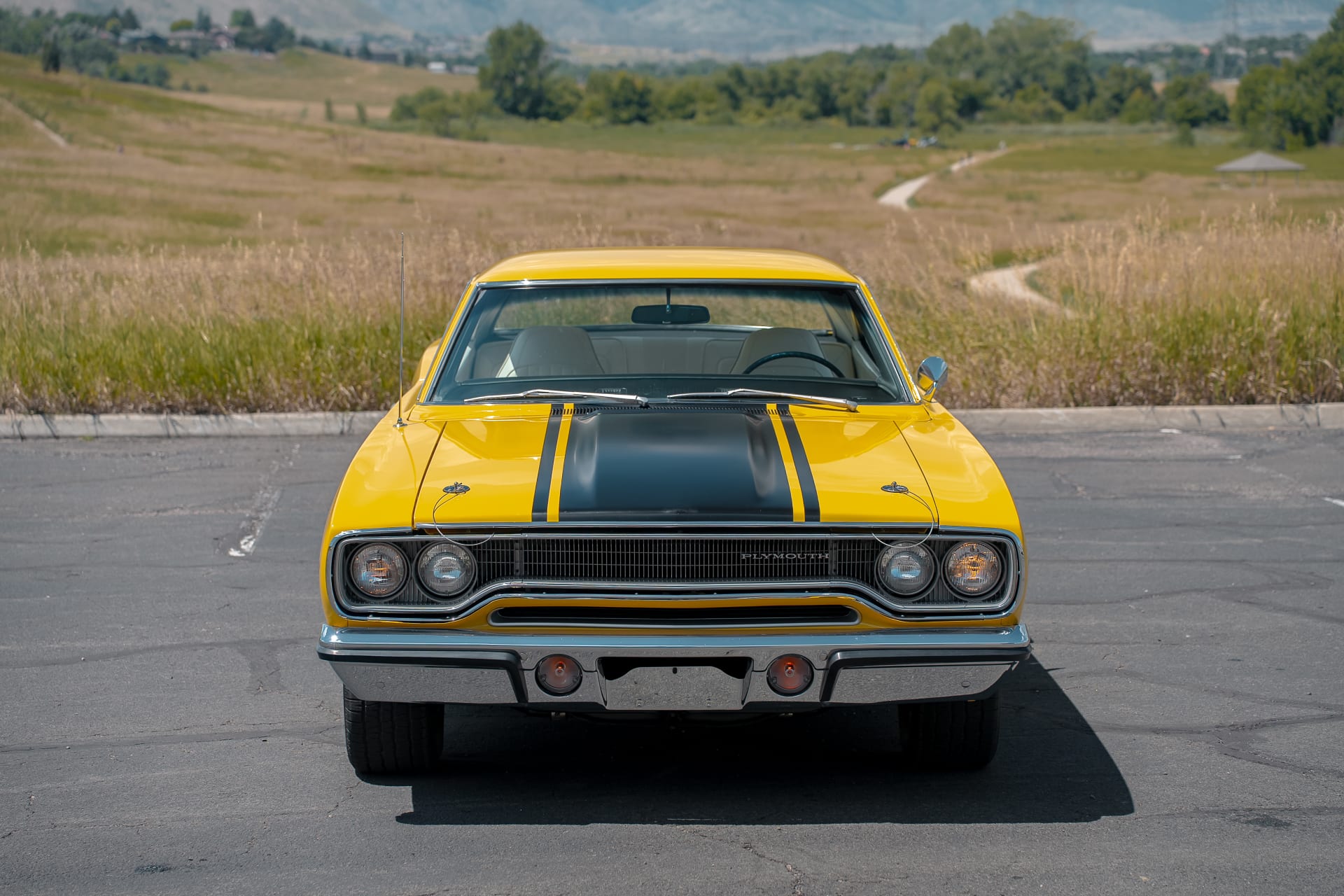 1970 Plymouth Road Runner
1970 Plymouth Road Runner
Frequently Asked Questions about the 1970 Plymouth Road Runner
What is the value of a 1970 Plymouth Road Runner?
The value of a 1970 Plymouth Road Runner can vary significantly depending on its condition, originality, engine option, and other factors. Well-preserved examples can command prices exceeding $100,000, while project cars or those requiring restoration may be available for considerably less.
What is the rarest 1970 Plymouth Road Runner?
The rarest 1970 Plymouth Road Runner is the convertible model equipped with the 426 Hemi engine. Only a handful of these cars were produced, making them highly sought-after by collectors.
What is the difference between a Road Runner and a GTX?
While both the Road Runner and GTX were performance models offered by Plymouth, the GTX was positioned as a more luxurious and upscale option. It typically came with more standard features, a more refined interior, and a slightly higher price tag than the more basic Road Runner.
Conclusion
The 1970 Plymouth Road Runner remains a true icon of the golden age of American muscle cars. Its powerful performance, aggressive styling, and enduring legacy continue to captivate enthusiasts today. Whether you’re a seasoned collector or simply an admirer of automotive history, the Road Runner’s charm and appeal are undeniable.
